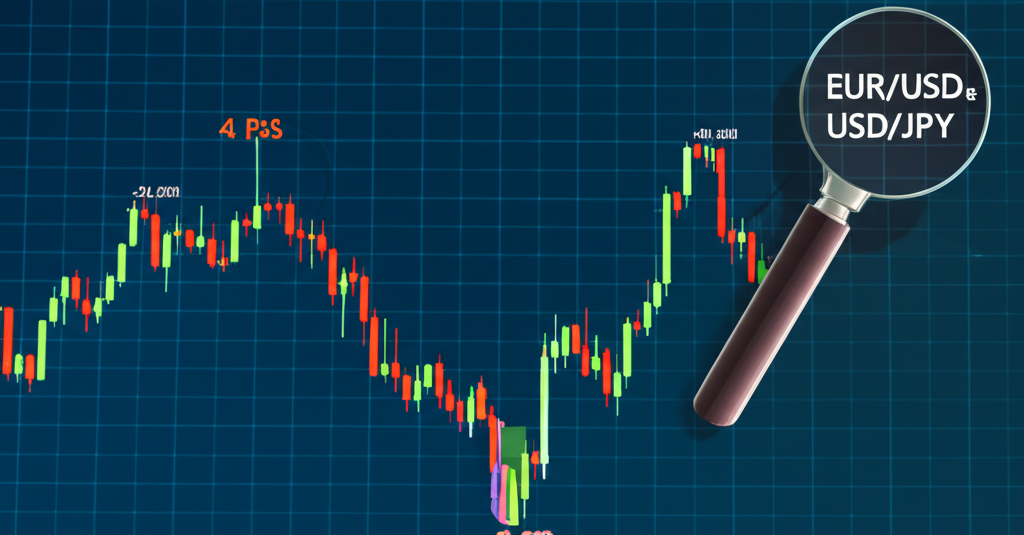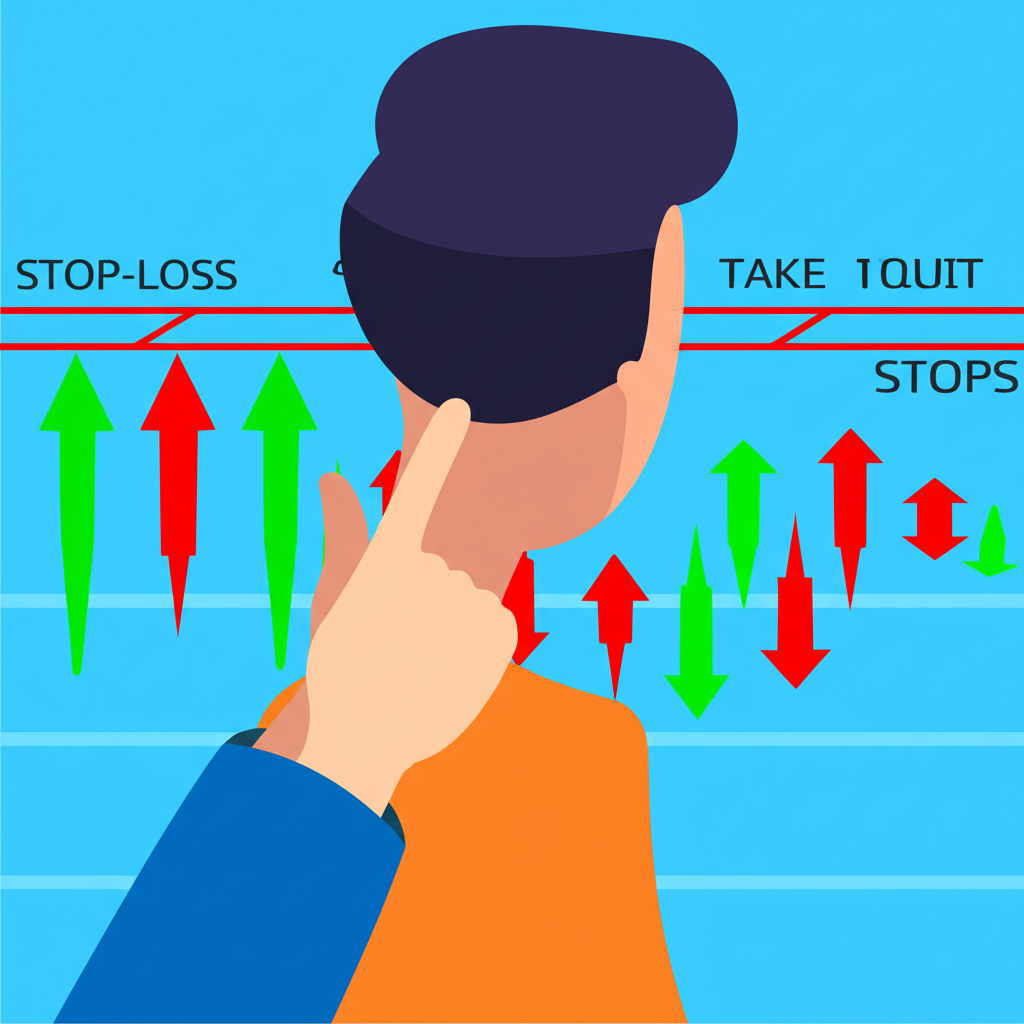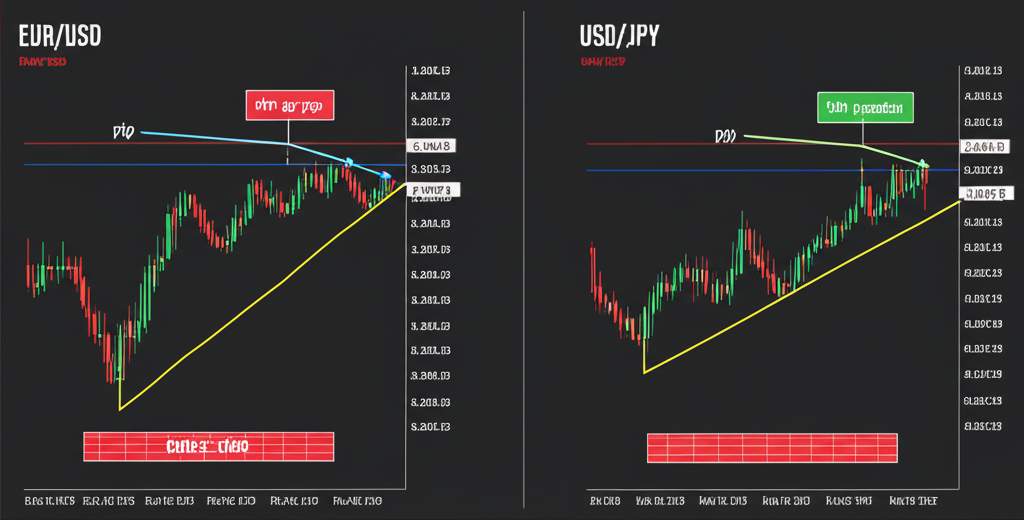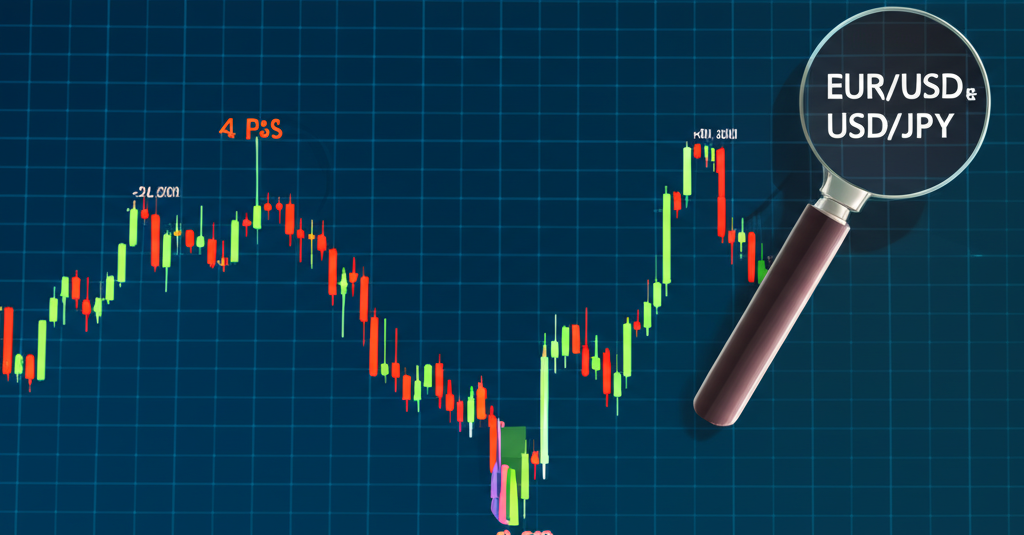Introduction: What is a Pip in Forex Trading?

In the fast-moving world of foreign exchange, tracking even the smallest shifts in currency values is crucial. One of the most essential tools for measuring these movements is the pip—short for “percentage in point” or “price interest point.” It represents the smallest standard increment by which a currency pair’s price can change. For most major pairs like EUR/USD or GBP/USD, that means the fourth decimal place. When the EUR/USD moves from 1.1050 to 1.1051, it has shifted by one pip. However, there’s an important exception: Japanese Yen (JPY) pairs such as USD/JPY or EUR/JPY. In those cases, a pip is measured at the second decimal place—so a rise from 148.30 to 148.31 equals one pip. Understanding this difference isn’t just academic; it directly affects how traders calculate gains, losses, and risk exposure. This guide will walk you through every aspect of pip counting, including how to apply it across different markets like Gold (XAU/USD), and ensure you can confidently interpret price changes in real trading scenarios.
Why Understanding Pips is Non-Negotiable for Every Trader

Pips form the foundation of all Forex performance metrics. Without a clear grasp of how they work, traders are essentially flying blind—unable to assess whether a trade was profitable, how much risk they’re exposed to, or how volatile a particular market might be. Every gain or loss in the Forex market is ultimately expressed in pips, making them indispensable for accurate analysis and decision-making.
First and foremost, pips are the universal unit for measuring **profit and loss**. If you enter a long position on AUD/USD and the price climbs from 0.6600 to 0.6650, your profit is 50 pips. The same applies to short trades: if you sell USD/CAD at 1.3500 and exit at 1.3460, that’s a 40-pip gain. This standardization allows traders to compare results across different pairs and account sizes without confusion.
Equally important is their role in **risk management**. Setting stop-loss and take-profit levels relies entirely on pip distances. Placing a stop 25 pips below your entry gives you a defined risk threshold. Similarly, a take-profit set 70 pips above locks in a measurable target. Without understanding pip values, these levels become arbitrary guesses rather than calculated decisions.
Beyond individual trades, pips help gauge **market volatility**. A pair that averages 80 pips of movement per day behaves very differently from one that swings 200 pips regularly. Recognizing this helps traders choose appropriate strategies—tighter stops for low-volatility pairs, wider buffers for high-momentum environments.
While modern platforms offer automated tools, knowing how to count and value pips manually builds deeper market intuition. It transforms trading from a button-pushing exercise into a strategic discipline grounded in numerical clarity. That foundational knowledge empowers traders to verify automated results, adapt quickly during technical glitches, and make informed choices under pressure.
The Anatomy of a Pip: Decimals, Pipettes, and Quote Conventions

Precision matters in Forex. While the pip is the standard unit of measurement, many brokers now quote prices with an extra digit to reflect finer price movements. This introduces the concept of the **pipette**, also known as a fractional pip.
Pips vs. Pipettes: The Smallest Fraction of Movement
For non-JPY currency pairs, a full pip is located at the fourth decimal place (0.0001), while a pipette occupies the fifth (0.00001). For example, if EUR/USD moves from 1.08420 to 1.08425, that’s a 5-pipette shift—or 0.5 pips. Though small, these micro-movements add up over time, especially in scalping or high-frequency strategies where tight spreads and minor fluctuations determine success.
For JPY-based pairs, the structure adjusts accordingly. Since a pip is at the second decimal (0.01), a pipette appears at the third (0.001). So when USD/JPY climbs from 152.600 to 152.630, it’s moved 30 pipettes, equivalent to 3 pips.
Many trading platforms display five decimal places by default, giving traders a more granular view of price action. While most trading parameters—like stop-loss levels—are still set in whole pips, pipettes allow for better precision in execution and backtesting. They also help in assessing liquidity and slippage, particularly around key economic events.
Standard vs. JPY Pairs: Counting Pips Differently
One of the first hurdles new traders face is remembering that not all currency pairs use the same pip convention. The rule of thumb is simple:
– **Standard Pairs (non-JPY):** The pip is found at the **fourth decimal place**.
Example: EUR/USD at 1.1200 → 1.1205 = 5 pips
Example: GBP/AUD at 1.9430 → 1.9480 = 50 pips
– **JPY Pairs:** The pip is at the **second decimal place**.
Example: USD/JPY at 150.00 → 150.15 = 15 pips
Example: EUR/JPY at 165.20 → 165.00 = 20 pips (downward movement)
This distinction stems from historical pricing norms and the relatively lower value of the yen compared to other major currencies. Misidentifying the pip location leads to miscalculations tenfold—something that can be costly in live trading. Always double-check the quote format before placing any trade.
Step-by-Step: How to Count Pips in Any Forex Pair
Knowing how to manually calculate pips gives you greater control and confidence, especially when automated tools aren’t available or when verifying platform outputs.
Counting Pips for Major Currency Pairs (e.g., EUR/USD, GBP/USD)
For pairs quoted to four or five decimal places, follow these steps:
1. Identify your entry and exit prices.
2. Subtract the lower price from the higher one (adjusting for long/short direction).
3. Multiply the result by 10,000 to convert to pips.
**Example: Long EUR/USD Trade**
– Entry: 1.10230
– Exit: 1.10680
– Difference: 1.10680 – 1.10230 = 0.00450
– Pips: 0.00450 × 10,000 = **45 pips**
**Example: Short GBP/USD Trade**
– Entry: 1.27500
– Exit: 1.27200
– Since price fell, subtract exit from entry: 1.27500 – 1.27200 = 0.00300
– Pips: 0.00300 × 10,000 = **30 pips**
Note: The fifth decimal (pipette) is often ignored in final pip counts unless extreme precision is required.
Counting Pips for JPY Currency Pairs (e.g., USD/JPY, EUR/JPY)
The process is identical, but the multiplier changes because the pip sits at the second decimal.
1. Record entry and exit prices.
2. Calculate the difference.
3. Multiply by 100 (since 1 pip = 0.01).
**Example: Long USD/JPY Trade**
– Entry: 151.200
– Exit: 151.900
– Difference: 151.900 – 151.200 = 0.700
– Pips: 0.700 × 100 = **70 pips**
**Example: Short EUR/JPY Trade**
– Entry: 166.500
– Exit: 166.100
– Price dropped, so: 166.500 – 166.100 = 0.400
– Pips: 0.400 × 100 = **40 pips**
Counting Pips for Cross-Currency Pairs (e.g., EUR/GBP)
Cross pairs—those without the US dollar—follow the same decimal rules based on the quote currency. If the quote isn’t JPY, it uses the fourth decimal place.
**Example: Long EUR/GBP Trade**
– Entry: 0.86120
– Exit: 0.86420
– Difference: 0.86420 – 0.86120 = 0.00300
– Pips: 0.00300 × 10,000 = **30 pips**
Despite the absence of USD, the calculation remains consistent with other non-JPY pairs.
Calculating the Value of a Pip: What 1 Pip is Worth
Counting pips tells you *how much* the price moved, but calculating pip value reveals *how much money* you gained or lost. This value depends on three factors: the currency pair, your trade size (lot), and your account denomination.
The Basic Pip Value Formula
The general formula to find pip value in the quote currency is:
**Pip Value = (One Pip in Decimal Form / Current Exchange Rate) × Lot Size**
Let’s break it down:
– **One Pip in Decimal Form:** 0.0001 for most pairs, 0.01 for JPY pairs
– **Exchange Rate:** The prevailing market rate
– **Lot Size:** Number of base currency units traded
For **EUR/USD**, with a rate of 1.1200 and a standard lot (100,000 EUR):
– Pip Value = (0.0001 / 1.1200) × 100,000 = 8.93 USD per pip
However, when USD is the quote currency (e.g., EUR/USD, GBP/USD), there’s a shortcut:
– **Standard lot:** ~$10 per pip
– **Mini lot:** ~$1 per pip
– **Micro lot:** ~$0.10 per pip
For **USD/JPY** at 152.00 with a standard lot:
– Pip Value = (0.01 / 152.00) × 100,000 = 6.58 USD per pip
Unlike USD-quoted pairs, JPY pip values fluctuate more noticeably with exchange rate changes.
Converting Pip Value to Your Account Currency
If your trading account uses a different currency than the quote currency of your trade, you must convert the pip value.
**Example: EUR/GBP Trade, Account in USD**
– Pair: EUR/GBP
– Lot: 1 standard (100,000 EUR)
– Pip Size: 0.0001
– Pip Value in GBP: 100,000 × 0.0001 = 10 GBP
– Current GBP/USD rate: 1.2600
– Pip Value in USD: 10 × 1.2600 = $12.60
So each pip movement yields $12.60 in profit or loss. This extra step ensures accurate performance tracking across multi-currency portfolios.
Impact of Lot Size on Pip Value
Your position size directly scales the financial impact of every pip. Larger lots mean bigger gains—and bigger risks.
| Lot Size | Units Traded | Pip Value (EUR/USD, USD account) | Pip Value (USD/JPY, USD account) |
|—————-|————–|———————————–|———————————-|
| Standard Lot | 100,000 | $10.00 | ~$9.00–$10.00 |
| Mini Lot | 10,000 | $1.00 | ~$0.90–$1.00 |
| Micro Lot | 1,000 | $0.10 | ~$0.09–$0.10 |

This table highlights why position sizing is central to risk control. A 50-pip adverse move costs $500 on a standard lot but only $5 on a micro lot. Smart traders align lot size with their risk tolerance and account balance.
Special Cases: How to Count Pips in Gold (XAU/USD) and Other Commodities
While currencies follow strict pip conventions, commodities like Gold (XAU/USD) operate under slightly different rules due to pricing structure and contract specifications.
Understanding “Points” vs. Pips in Gold Trading
Gold is typically quoted with two decimal places (e.g., $2,340.25). A one-cent move ($0.01) is commonly referred to as a “point,” though many traders still call it a pip for consistency. Unlike Forex, where pips are fractions of exchange rates, in Gold, each point represents a direct dollar fraction.
A move from $2,340.00 to $2,341.00 equals 100 points—equivalent to 100 pips. The smallest price increment is $0.01, so traders track movements in these units.
Practical Example: Counting Pips in XAU/USD
Let’s define a pip as $0.01 for calculation purposes.
**Example: Buy XAU/USD at $2,320.50, Sell at $2,335.75**
– Price Difference: $2,335.75 – $2,320.50 = $15.25
– In Pips: $15.25 ÷ $0.01 = **1,525 pips**
To determine profit, you need the contract size. Most brokers offer XAU/USD as a CFD with a standard lot equal to 100 troy ounces. If each $0.01 move is worth $1 per ounce, then:
– 1 pip value = 100 oz × $1 = $100
– Total Profit = 1,525 pips × $100 = $152,500 (on a full standard lot)
Always consult your broker’s specification sheet, as pip value can vary between platforms and instruments (CFDs vs. futures).
Common Mistakes When Counting Pips and How to Avoid Them
Even experienced traders occasionally slip up. But beginners are especially vulnerable to avoidable errors that can distort risk assessment and performance tracking.
Confusing Pips with Pipettes
Seeing a price move from 1.08420 to 1.08470 might look like a 50-pip gain—but it’s actually 50 pipettes, or 5 pips. This tenfold error can severely misrepresent performance.
**Avoidance Tip:** Always round to the fourth decimal (or second for JPY) when counting full pips. Use pipettes only for precision analysis, not for final profit/loss statements.
Incorrectly Identifying the Quote Currency for Value Calculation
Many assume pip value is always in USD. But in EUR/GBP, it’s in GBP. In USD/CAD, it’s in CAD. Failing to recognize this leads to incorrect conversions.
**Avoidance Tip:** Remember the pair format: Base/Quote. The quote currency is always the second one. That’s where the pip value is initially calculated.
Ignoring Lot Size in Profit/Loss Calculation
Counting 30 pips of gain means nothing without knowing the position size. Is it $3 on a micro lot or $300 on a standard lot?
**Avoidance Tip:** Always pair pip counts with lot size. Develop the habit of writing down: “30 pips × micro lot = $3” to reinforce the connection between price movement and monetary impact. This discipline is critical for responsible risk management, as emphasized by regulatory bodies like the Financial Conduct Authority (FCA) on their website.
Leveraging Pip Calculators: When to Use Them
While manual calculations build competence, pip calculators are powerful tools for speed and accuracy—especially in live markets.
How Pip Calculators Streamline Your Trading
A reliable pip calculator instantly returns the monetary value of a pip based on your selected pair, lot size, and account currency. This is invaluable during fast sessions or when managing multiple positions.
Key advantages include:
– **Speed:** Get instant feedback before entering a trade.
– **Accuracy:** Eliminates arithmetic errors, especially with cross pairs.
– **Clarity:** Helps visualize risk-reward ratios by testing various stop-loss and take-profit distances.
Many brokers integrate these tools directly into their platforms, while third-party versions are widely available online.
Verifying Your Manual Calculations with a Calculator
The ideal approach combines learning with verification. First, calculate pips and their value by hand. Then, plug the same numbers into a trusted pip calculator. When both results match, your understanding is confirmed.
This dual method strengthens confidence and ensures you’re not dependent on technology alone. It also sharpens your ability to spot anomalies—like incorrect platform readings or unexpected slippage—before they impact your bottom line.
Conclusion: Your Foundation for Informed Forex Trading
Understanding pips is not just a technical detail—it’s the cornerstone of effective Forex trading. From measuring performance to setting risk parameters and evaluating market behavior, pips provide the numerical clarity needed to trade with purpose. Whether you’re analyzing EUR/USD, navigating USD/JPY, or trading Gold, mastering pip calculation empowers you to interpret price action accurately and manage capital wisely.
By practicing manual methods, you build an intuitive sense of market movement that automated tools alone cannot provide. At the same time, knowing when to use a pip calculator enhances efficiency without sacrificing control. Combine both approaches, stay vigilant about common pitfalls, and consistently apply proper lot sizing. With this disciplined foundation, you’ll be well-equipped to navigate the complexities of global markets with precision and confidence.
Frequently Asked Questions (FAQs) About Counting Pips in Forex
1. How do I calculate my pips in forex manually, step-by-step?
To manually calculate pips:
- Note your trade’s entry price and exit price.
- Subtract the entry price from the exit price (or vice versa, depending on buy/sell and profit/loss).
- For most currency pairs (e.g., EUR/USD), multiply the difference by 10,000 (since 1 pip = 0.0001).
- For JPY pairs (e.g., USD/JPY), multiply the difference by 100 (since 1 pip = 0.01).
The result is the number of pips gained or lost.
2. What is the exact monetary value of 1 pip for major currency pairs like EUR/USD?
For major currency pairs where USD is the quote currency (e.g., EUR/USD, GBP/USD), 1 pip for a standard lot (100,000 units) is generally worth $10. For a mini lot (10,000 units), it’s $1, and for a micro lot (1,000 units), it’s $0.10.
3. How many pips would a $10 profit represent for a standard lot trade?
This depends on the currency pair and your account currency. If you’re trading a standard lot of EUR/USD and your account is in USD, 1 pip is worth $10. Therefore, a $10 profit would represent a 1-pip movement in your favor.
4. Can you explain the difference between a pip and a pipette with examples?
A pip is the fourth decimal place for most currency pairs (e.g., 0.0001 for EUR/USD) and the second decimal place for JPY pairs (e.g., 0.01 for USD/JPY).
A pipette (or fractional pip) is one-tenth of a pip. For most pairs, it’s the fifth decimal place (e.g., 0.00001 for EUR/USD), and for JPY pairs, it’s the third decimal place (e.g., 0.001 for USD/JPY). Brokers often quote prices with pipettes for greater precision.
5. How do I calculate profit or loss in pips for a specific trade entry and exit?
Subtract your entry price from your exit price (or vice-versa for short trades). Then, multiply the resulting decimal by 10,000 for non-JPY pairs or 100 for JPY pairs to get the total pips. If the result is positive, it’s a profit; if negative, it’s a loss.
6. Is the calculation method for pips different when trading exotic currency pairs?
No, the core calculation method for pips (fourth decimal for non-JPY, second for JPY) remains the same for exotic pairs. However, the monetary value of a pip will differ significantly due to the exchange rates and often wider spreads.
7. What role does my account currency play in determining the value of a pip?
Your account currency determines the final monetary value of a pip. After calculating the pip value in the quote currency of your trade, you must convert that value into your account currency (e.g., USD, EUR) to know your actual profit or loss. This is crucial for accurate risk assessment and portfolio management.
8. How do I count pips when trading Gold (XAU/USD) or other commodities?
For Gold (XAU/USD), movements are typically measured in “points,” where 1 point equals $0.01. To count “pips” (as 0.01 increments), you take the price difference and divide it by 0.01. For example, a move from $1850.50 to $1851.00 is a $0.50 difference, which is 50 “pips” ($0.50 / $0.01 = 50).
9. What are the most common pitfalls or errors when beginners try to count pips?
- Confusing pips with pipettes (fifth vs. fourth decimal place).
- Incorrectly applying the JPY pair rule (second decimal place).
- Failing to convert the pip value to their account currency.
- Ignoring the impact of lot size on the monetary value of pips.
Careful attention to these details and consistent practice can help avoid these errors.
10. When should I use a Forex pip calculator instead of manual counting?
While learning, prioritize manual counting to build understanding. Once you’re confident, use a Forex pip calculator for:
- Quick verification of your manual calculations.
- Rapid pre-trade analysis in fast-moving markets.
- Dealing with complex cross-currency pairs.
- Efficiently calculating profit/loss across multiple open trades.
Calculators streamline the process, but manual knowledge is the foundation.

留言